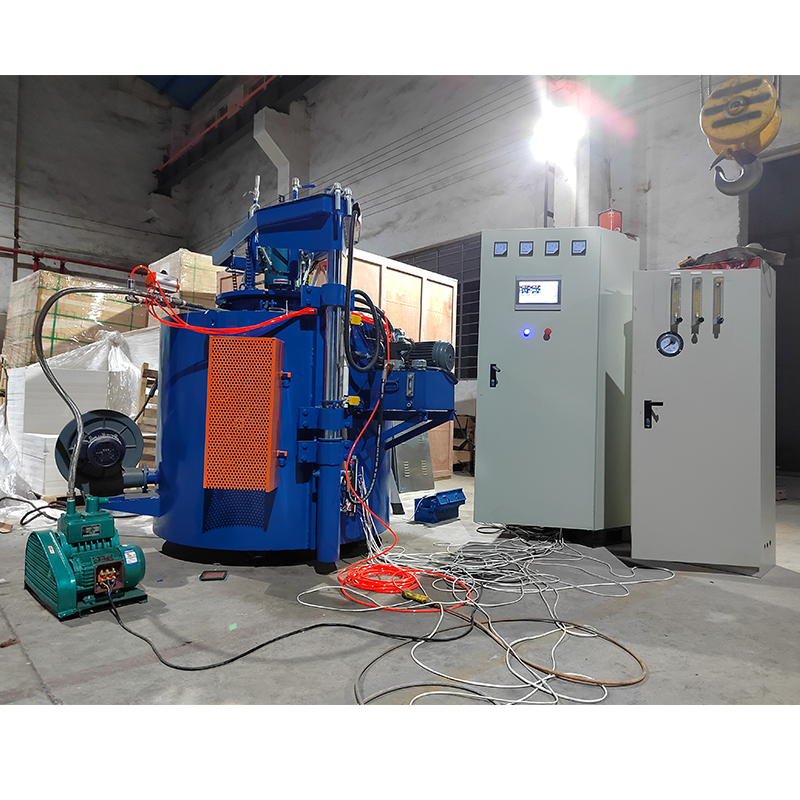How to choose gas nitriding process and parameters?
May. 28, 2024
The gas nitriding process and parameters are mainly determined based on the nitriding layer depth and surface hardness requirements of the part. There are three commonly used nitriding processes: isothermal nitriding, two-stage nitriding, and three-stage nitriding. Its main process parameters (temperature, time, ammonia decomposition rate), functions, characteristics and applications are as follows.
Isothermal nitriding method (general nitriding method)
The isothermal nitriding temperature is generally 500~510℃, the holding time is 48~100h, the depth of the nitriding layer can reach 0. 45~0. 60mm, the surface hardness is above 900HV, and the nitriding layer is relatively brittle.
1. Process content and functions
a. The ammonia decomposition rate in the early stage is controlled at a low limit, so that nitrides with large dispersion are quickly formed on the surface to obtain a high-hardness surface layer.
b. In the later stage, the decomposition rate of ammonia increases, causing nitrogen atoms in the surface layer to diffuse into the inner layer, increasing the thickness of the permeable layer.
c. In order to reduce the brittleness of the nitrided layer, diffusion treatment can be performed for 2 hours before the end of nitriding to reduce the surface nitrogen concentration. At this time, the ammonia decomposition rate can be controlled above 70%.
d. For parts with strict deformation requirements, the furnace should be cooled to 180~200℃ after nitriding. Generally, it can be cooled quickly below 450℃.
2. Features and functions
a. The nitriding temperature is low, the deformation of parts is small, and a high-hardness surface layer can be obtained. The operation is simple, but the nitriding layer is shallow and the production cycle is long.
b. The surface is prone to a nitrogen-rich embrittlement layer, and sometimes there is a loose layer.
c. It is suitable for parts with strict deformation requirements and high hardness requirements of the nitriding layer.
Two stage nitriding
Two-stage nitriding involves nitriding at 510°C first, and then nitriding at 530-540°C. The holding time of the two stages is equal or the latter stage is slightly longer. The nitriding time is about 1/3 less than isothermal nitriding. The surface hardness is low, 30~50HV.
1. Process content and functions
a. The decomposition rate of one-stage nitriding is low, so that nitrides with fine particles and high dispersion can be formed on the surface, resulting in higher surface hardness.
b. The temperature and ammonia decomposition rate of the second-stage nitriding increase, which accelerates the diffusion of nitrogen, increases the depth of the nitriding layer, shortens the production cycle, makes the hardness gradient gentle, and can also thin the brittle white layer.
2. Features and applications
a. On the premise of ensuring high surface hardness, the production cycle can be shortened, and a deeper nitrided layer can be obtained at the same time.
b. It is suitable for parts with deep nitriding layer, hard surface and simple structure.
Three stage nitriding
Three-stage nitriding involves nitriding at 510°C, then raising the temperature to 550-560°C for nitriding, and then lowering the temperature to 520-530°C for nitriding. The holding time is about 1/3 each, the infiltration speed is faster, and the surface hardness is different from that of the two-stage nitriding. Nitrogen is similar, but slightly more deformable.
1. Content and function
a. In the first stage, when the nitriding temperature is low and the nitrogen decomposition rate is low, the nitrogen concentration in the outermost layer reaches saturation.
b. The second stage increases the temperature, which increases the ammonia decomposition rate and the diffusion speed of nitrogen atoms into the interior.
c. Continue nitriding in the third stage to make the nitrogen concentration of the surface layer reach the optimal concentration without making the surface hardness too low.
2. Features and applications
Nitriding time is short and the nitriding layer is deep, but the process is complicated and difficult to control. The allowable deviation of nitriding temperature is ±10°C, and the nitriding time is generally determined by the depth of the nitriding layer measured with the furnace sample. The preparatory heat treatment before nitriding usually adopts quenching and tempering treatment, and normalizing treatment is allowed for general parts.










